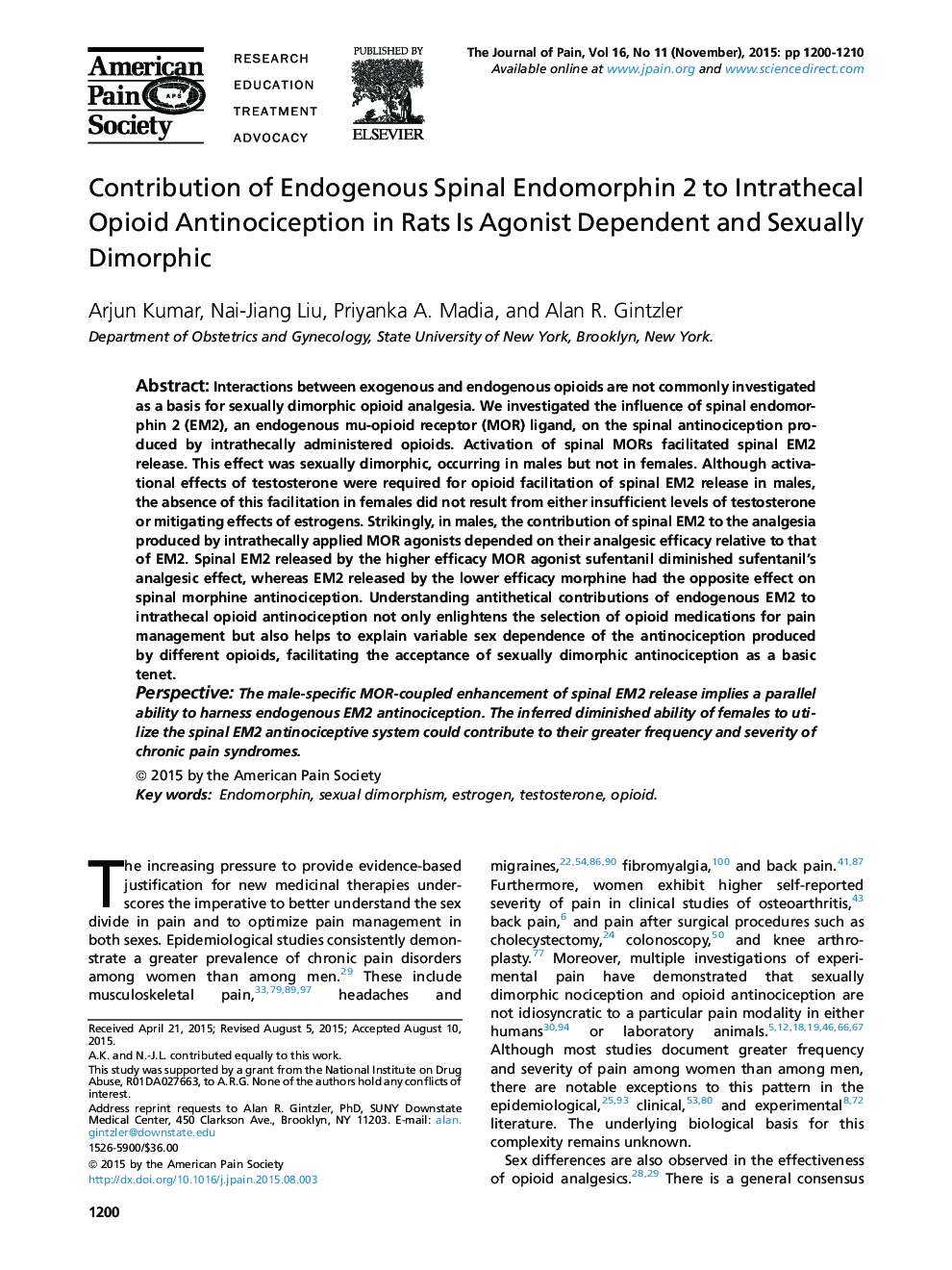| کد مقاله | کد نشریه | سال انتشار | مقاله انگلیسی | نسخه تمام متن |
|---|---|---|---|---|
| 2733567 | 1566727 | 2015 | 11 صفحه PDF | دانلود رایگان |

• We studied contribution of spinal endomorphin to opioid analgesia in rats.
• Mu-opioids enhance spinal endomorphin release in males but not in females.
• Released endomorphin reduces the analgesia of high-efficacy mu-opioids.
• Findings explain variable sex dependence of opioid antinociception.
• Findings could inform the selection of opioid analgesics in humans.
Interactions between exogenous and endogenous opioids are not commonly investigated as a basis for sexually dimorphic opioid analgesia. We investigated the influence of spinal endomorphin 2 (EM2), an endogenous mu-opioid receptor (MOR) ligand, on the spinal antinociception produced by intrathecally administered opioids. Activation of spinal MORs facilitated spinal EM2 release. This effect was sexually dimorphic, occurring in males but not in females. Although activational effects of testosterone were required for opioid facilitation of spinal EM2 release in males, the absence of this facilitation in females did not result from either insufficient levels of testosterone or mitigating effects of estrogens. Strikingly, in males, the contribution of spinal EM2 to the analgesia produced by intrathecally applied MOR agonists depended on their analgesic efficacy relative to that of EM2. Spinal EM2 released by the higher efficacy MOR agonist sufentanil diminished sufentanil's analgesic effect, whereas EM2 released by the lower efficacy morphine had the opposite effect on spinal morphine antinociception. Understanding antithetical contributions of endogenous EM2 to intrathecal opioid antinociception not only enlightens the selection of opioid medications for pain management but also helps to explain variable sex dependence of the antinociception produced by different opioids, facilitating the acceptance of sexually dimorphic antinociception as a basic tenet.PerspectiveThe male-specific MOR-coupled enhancement of spinal EM2 release implies a parallel ability to harness endogenous EM2 antinociception. The inferred diminished ability of females to utilize the spinal EM2 antinociceptive system could contribute to their greater frequency and severity of chronic pain syndromes.
Journal: The Journal of Pain - Volume 16, Issue 11, November 2015, Pages 1200–1210